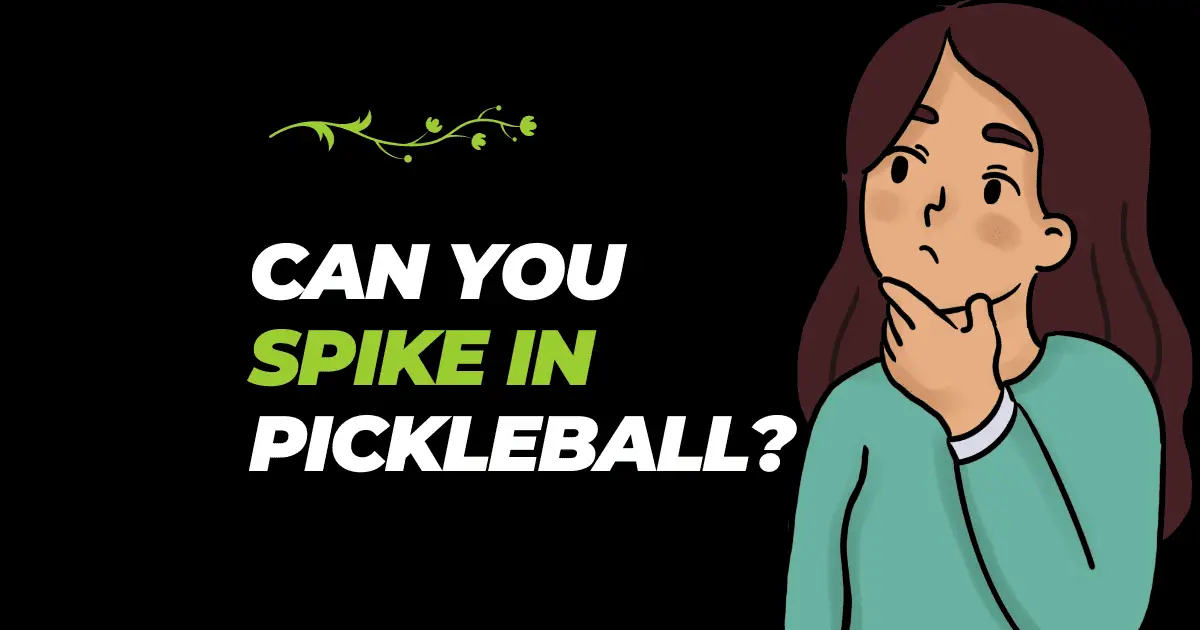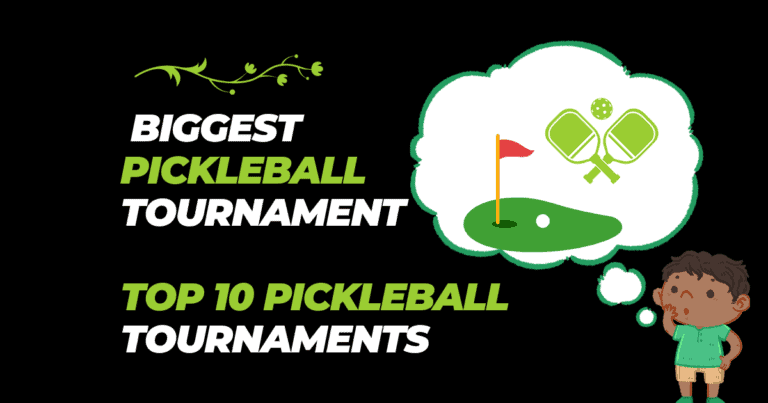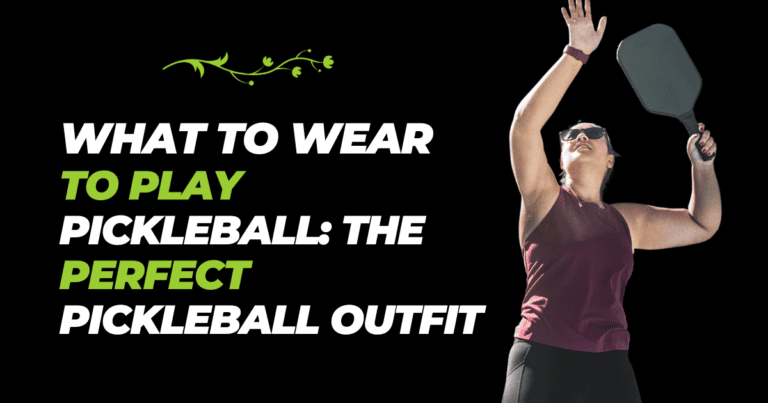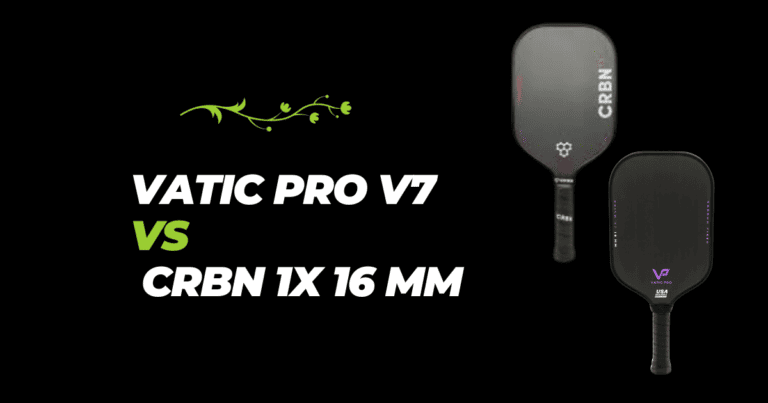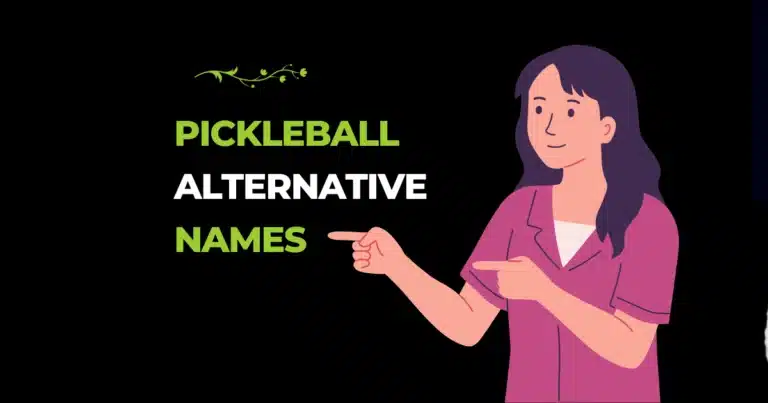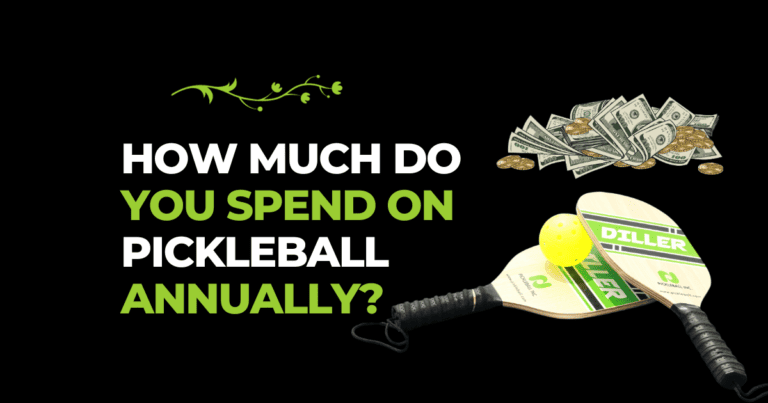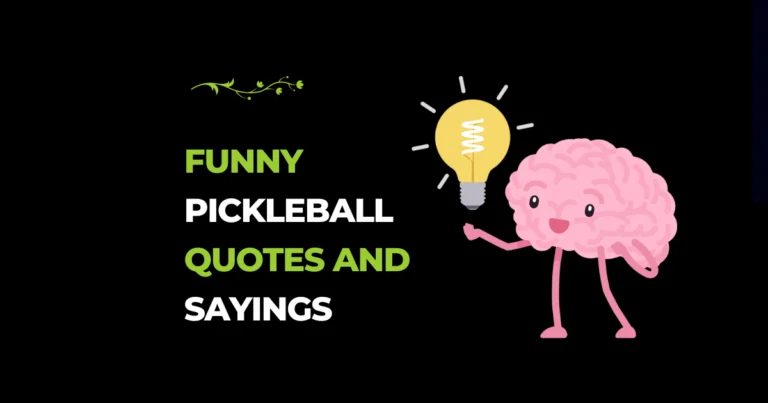Last updated on: October 2, 2023
You grip the pickleball, ready to spike. But can you? The crowd awaits your next move. This moment will define you. What will you choose?
Can you spike in pickleball or stay safe?
The short answer is no, you cannot spike in pickleball. Spiking is an illegal move that results in a fault.
What is a Spike in Pickleball?
A spike in pickleball occurs when a player slams the ball down into the opponent’s court with an aggressive swinging motion. This is similar to spiking in volleyball, where players jump up and smash the ball over the net. The purpose of a pickleball spike is to catch the opponent off guard with a powerful, fast-moving shot that is difficult to return. Successfully spiking the ball can allow a team to quickly win the point.
Is Spiking Allowed in Pickleball?
The short answer is yes, spiking is legal in pickleball, but only under certain conditions. The USA Pickleball Association rulebook governs when players can and cannot spike the ball. Understanding these rules is key to properly executing spikes and avoiding faults.
The primary factor determining the legality of a pickleball spike is the player’s positioning on the court. Essentially, you can only spike the ball before it bounces and while you are behind the non-volley zone, more commonly known as “the kitchen.” The kitchen is the 7-foot area before the net on each side bounded by the baseline.
If you spike the ball while inside the kitchen or after it bounces, the shot would be considered illegal and your team would lose the point. Additionally, the spike must travel straight down into the opponent’s court rather than be hit at an angle. The rules prohibit what is sometimes called an “angled spike.”
Understanding the Spiking Rules
Let’s break down the official USA Pickleball Association rules step-by-step so you can fully understand what constitutes a legal pickleball spike:
- You must be behind the non-volley zone (kitchen) line – This 7-foot zone adjacent to the net is a critical factor. All spiking motions must originate with the player’s feet behind this line to be valid.
- You can only spike the ball before it bounces – The paddle must make contact with the ball mid-air on the fly for a legal spike. You cannot legally spike a ball after it bounces in your court.
- The ball must travel straight down into the opponent’s court – Angled spikes into the opponent’s court are not allowed. The spike must travel perpendicular to the court surface.
- The ball must clear the net without touching it – A spike is illegal if the ball clips the net on the follow-through of the spiking motion.
- The paddle head must be below the wrist – Similar to the rules in tennis, the paddle head cannot be above the line of the wrist during the spiking motion.
- Only one player per team can be in the kitchen at a time – Both players cannot be inside the 7-foot non-volley zone and spike. One has to be behind the baseline.
Why Spiking is Illegal in Pickleball
In volleyball, aggressive spiking is a core offensive skill. But in pickleball, it’s an illegal move that results in a fault if you:
- Smash the ball down into the opponent’s court 🤺
- Hit with an overhead paddle swing 💨
- Strike the ball without it bouncing ❌
There are a few key reasons spiking is not allowed:
- Smashing the ball can be dangerous at pickleball’s close net distance.
- Spiking can result in the ball moving extremely fast, raising risks of injuries.
- Prohibiting spikes promotes a friendlier, recreational environment.
What Constitutes a Legal Spike?
To recap, for a pickleball spike to be legal and count as a fair, in-bounds shot, it must fulfill all of the following criteria:
- Originated by a player whose feet are behind the non-volley (kitchen) line
- Made contact with the ball before it bounces
- Struck with a downward vertical motion straight into the opponent’s court
- The ball clears the net without touching it
- Paddle head below wrist line on follow-through
- No more than one player from each team inside the kitchen
Shots that violate any of the above rules would be considered illegal spikes. The most common illegal spikes are when a player spikes the ball from inside the kitchen, spikes after the ball bounces, or spikes with an angled shot. But as long as your spike meets the USA Pickleball Association guidelines, it will count as fair play.

Positioning for Spiking in Pickleball
Proper positioning is vital for spiking the ball legally and effectively in pickleball. Here are some tips on footwork and court position:
- Move behind the kitchen line as the ball is in the air – This allows you to spike before the bounce.
- Get your body low in an athletic stance – Having a lowered center of gravity allows you to explode up into the spike.
- Keep your weight balanced on the balls of your feet – This enables quick movement and adjustment.
- Line up facing perpendicular to the net – Lining up side-on allows better rotation through the spike.
- Follow the ball across your body – Tracking the ball with your eyes allows proper timing.
- Shift weight from back foot to front foot – Generating power by transferring weight forward.
- Use cross-over footwork to move laterally – Side shuffle steps help you align your hitting shoulder and arm.
Mastering footwork and positioning is vital to ensure your spike originates from a legal court position. Proper technique provides strength, accuracy, and consistency on your spikes.
Tips for Improving Your Spiking Ability
Executing legal and high-quality spikes in pickleball requires the development of specific technical skills. Here are some tips on techniques to improve spiking prowess:
- Use a compact backswing – Keeping the backswing short and low allows a free-flowing forward swing.
- Hold the paddle face perpendicular to the ball – This aligns the sweet spot for clean contact.
- Keep a firm grip but don’t choke up – Gripping too tight reduces feel and control.
- Snapshot your wrist on contact – Quickly snapping the wrist adds speed and power.
- Follow through high to low – Extend your arm fully downward on the follow-through.
- Contact the ball out in front of your body – Reach for the ball to utilize full leverage and rotation.
- Rotate your torso through the shot – Generating torque with your core helps transfer weight.
- Spike down the line or with sharp cross-court angles – Aim for corners and edges of the court.
| Pros | Cons |
| Focusing on technique helps develop more powerful and accurate spikes. | Can take a lot of practice to make proper technical habits. |
| Learning proper mechanics like grip, footwork, and swing path improves consistency. | Overthinking mechanics can make spikes seem robotic or passive. |
| Mastering control of backswing, impact point, and follow-through enhances spike placement. | Obsessing over textbook techniques can reduce instinctual reactions during play. |
| Ability to hit sharp cross-court angles or down-the-line spikes keeps opponents off balance. | No substitute for just attempting spikes during actual games. |
| Good technique allows a player to disguise spikes or alter timing to fool opponents. | |
| Refining technique through training aids like solo drills, wall practice, and spike targets. |
Pro Tip: Break down the spike into individual parts – setup, backswing, forward swing, follow through. Master each segment fully before linking them together into one fluid motion. This incremental approach helps ingrain proper mechanics.
Common Mistakes to Avoid When Spiking
While the spike can be an effective weapon, it also requires flawless technique and timing to avoid errors. Here are some common mistakes pickleball players make when attempting to spike:
- Spiking from inside the kitchen – Failure to recognize court position.
- Hitting angled spikes – Not directing the shot straight down.
- Swinging wildly – Lack of control leads to shots going long.
- Choking up too high – Reduces power and rhythm.
- Insufficient knee bend – Limits ability to generate force upwards.
- Panhandling grip – Causes off-center contact leading to the ball sailing wide.
- Netting the spike – Following through too low causes the ball to clip the net.
- Telegraphing with an early backswing – Alerts opponents you are spiking.
- Hitting off-balance – Poor footwork and rushing the shot leads to mishits.
Remaining cognizant of these potential errors will help avoid unforced mistakes on spikes. Proper technique, footwork, grip, and timing are all crucial elements for clean and effective pickleball spikes.
What to Do in the Kitchen in Pickleball
As we’ve covered, the 7-foot non-volley zone right before the net, aka the “kitchen,” plays a pivotal role in pickleball spiking regulations. But the kitchen is also hugely influential on overall pickleball strategy and point construction
Can You Spike in the Kitchen in Pickleball?
The short answer is no. Spiking is only legal when initiated outside the kitchen area. Once you are inside the kitchen, you cannot legally spike the ball on the fly. You can, however, softly volley the ball or play tipped shots while inside this zone.
The Rules Surrounding Spiking in the Kitchen
According to the USA Pickleball Association Rulebook (Section 10.A.2), it is a fault if you or your partner hit a ball in the air while within the kitchen without letting it bounce. The key determinations are:
- The player’s feet must be contacting the playing surface within the bounds of the non-volley zone.
- The player hits a ball that has not yet bounced.
- The follow-through motion crosses over the non-volley zone.
This means that not only the point of contact but the entire spiking motion must be initiated outside of the kitchen area. Even if just the follow-through enters the kitchen, it is grounds for a fault.
What Constitutes a Legal Kitchen Spike?
There are a couple of scenarios in which you can legally strike the ball from the air within the confines of the kitchen area:
- After the opposing team has hit the ball twice. On the third hit, both teams can volley the ball from anywhere, including the kitchen.
- If the ball bounces inside the kitchen first, then it can legally be volleyed or spiked from there.
So essentially, you can only make legal contact with the ball in the air inside the kitchen if it bounces there first or your opponents have already hit it twice before crossing over.
Common Kitchen Court Strategies in Pickleball
Since spiking in the kitchen is prohibited, it changes gameplay strategy significantly when up at the non-volley zone. Here are some effective tactics:
- Play quick volleys back and forth – Rapidly trading soft shots applies pressure on opponents.
- Drop shots over the net – Well-placed touch shots tantalize opponents into rushing the net.
- Lobs over their heads – High arcing shots force opponents to retreat from the kitchen.
- Fake spike, then soft volley – Fools opponents and changes pace.
- Poach across court – Cuts off angles on their attempted passing shots.
- Communicate with your partner – Call out shots and moves to dominate the kitchen.
- Drive opponent back with hard shots – Allows you or your partner to advance forward.
- Finish point off with swinging volley – A put-away volley is legal if you remain outside kitchen.
Mastering kitchen play is a crucial pickleball skill at all levels. Combining quick reflexes, soft hands, lobs, and communication allows you to tactically control this pivotal battleground on the court.
Spike Tips in Pickleball
Now that you understand the basics of legal vs illegal spiking, here are some pro tips to take your pickleball spikes to the next level:
Footwork Techniques
- Keep feet active and knees bent – This allows quick lateral movement and explosion up into the shot.
- Use cross-over steps to open up sideways – Rotating body perpendicular to the net generates more power.
- Shift weight from back foot to front foot – Transfer weight into shot for added power.
- Move inside the court to cut off angles – Reduces their ability to aim shots wide of you.
Grip Techniques
- Grip lower down on paddle handle – Lowers your contact point for greater leverage and whip.
- Index finger pointed down handle – Stabilizes grip through the spiking motion.
- Hold firmly but not too tight – Maintain feel and finesse on the shot.
Strategies
- Rush the net quickly while partner serves – Gets you into position faster to spike returns.
- Hit behind opponents when pulled wide – Open court to aim for when they are drawn out of position.
- Vary shot placements – Mix up spikes down the line and cross court.
- Spike straight over the net person’s paddle hand – Reduces their reaction time.
- Disguise your spike wind up – Don’t telegraph it with an early backswing.
With refined technique, footwork, grip, and strategy, your pickleball spikes will have opponents scrambling! Use this offensive weapon as part of a well-rounded pickleball skillset to take your game to the next level.
Frequently Asked Questions about Spiking in Pickleball
Can you spike in pickleball if your paddle doesn’t go above your wrist?
No, spiking or slamming the ball into the opponent’s court is illegal, regardless of paddle height. The key is allowing the ball to bounce before striking downwards.
What happens if you spike the ball in pickleball?
Spiking results in an immediate fault, your opponent wins the point. Intentionally spiking repeatedly can also lead to forfeiture or disqualification at the referee’s discretion.
Why is spiking frowned upon in pickleball?
Mainly for safety reasons, as spiking can result in very fast, unpredictable ball movement that raises injury risks. It also shifts the game’s focus toward athleticism over strategy and controlled placements.
Is spiking considered unsportsmanlike conduct in pickleball?
It’s not necessarily unsportsmanlike, but it is illegal. Occasional accidents happen, but intentionally spiking to gain an advantage or disrupt opponents is considered poor etiquette and sportsmanship.
What shot in pickleball is similar to a volleyball spike?
The overhead slam – smashing the ball down forcefully with an overhead swing – is the closest equivalent after allowing one bounce. Doing so before the bounce makes it an illegal spike.
Summary of key points:
- Spiking (hitting the ball aggressively down into the opponent’s court before it bounces) is an illegal move in pickleball that results in a fault.
- Spiking was banned primarily for safety reasons and to promote pickleball as an accessible sport requiring finesse over athleticism.
- Legal pickleball shots that add excitement include overhand slams (after bounce), volleys, lobs, and deep groundstrokes.
- If you spike the ball, your opponents immediately win the point. Intentionally spiking repeatedly can lead to disqualification.
- While spiking is frowned upon, pickleball still allows athleticism and competitive play using creative strategies within the rules.

